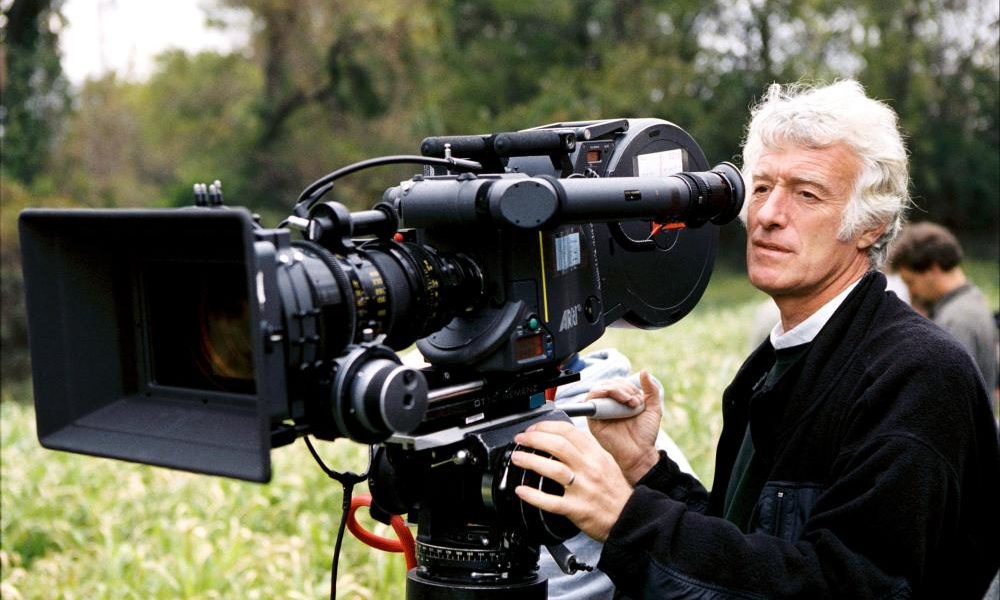Shining a Light on the Greatest Cinematographer Working Today.
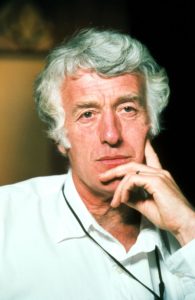 Roger Deakins is widely considered to be the best cinematographer working today. He is an artist that is on a level above others and is almost too easy to pick when asked the question of who is the best. I went through periods over the years where I would defiantly say Robert Elswit (Paul Thomas Anderson’s regular) of Christopher Doyle (Park Chan-wook’s regular) were the best. But you always went back to Deakins in the end. Like Daniel Day Lewis or Meryl Streep with acting, it may not be the most exciting answer to say they’re the best, but it’s still the right answer.
Roger Deakins is widely considered to be the best cinematographer working today. He is an artist that is on a level above others and is almost too easy to pick when asked the question of who is the best. I went through periods over the years where I would defiantly say Robert Elswit (Paul Thomas Anderson’s regular) of Christopher Doyle (Park Chan-wook’s regular) were the best. But you always went back to Deakins in the end. Like Daniel Day Lewis or Meryl Streep with acting, it may not be the most exciting answer to say they’re the best, but it’s still the right answer.
When I think of some of his shots, from the looming faces in 1984, to the long hallways in Barton Fink, to the widespread winter snow in Fargo, to the booming light from the shadows in The Man Who Wasn’t There, to trains coming out of the smoke in The Assassination of Jesse James by the Coward Robert Ford, to the red roses and yellow cloaks in The Village, to the dawning landscapes of pain in Sicario, it is an occasional reminder that we have lived in the time of possibly the Greatest Ever.
And not only is Deakins a master of visuals, but he is also skilled at complimenting exactly what the director was going for. Can you think of any more dissimilar directors than the Coens and Denis Villeneuve? Yet, Deakins was able to get the maximum amount of humor out the former’s films and the right amount of beautiful tension out of the latter’s films. Both respective filmmakers were undeniably over-credited at the expense of Deakins’ credit for his masterful work.
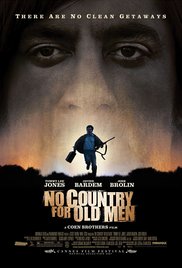
Like Scorsese, before winning for The Departed, it has become a joke that turned into a crime that he has yet to win an Academy Award. That crime has now been applied to Deakins. He has yet to win an Oscar, despite being so far ahead of others in the game. Some of that is because of who he is as an artist. He has focused more on films with an edge; that are not necessarily deemed Oscar-bait, because his passions lie in other places besides winning awards. But, because of that, the campaign for him to win for his newest film, Blade Runner 2049, is growing to the point that it is a foregone conclusion. The Cinematographer’s category is basically going to double as lifetime achievement award for Deakins. It is well deserved, and it will be exciting to see a master finally be rewarded, even if it’s long overdue.
– Paul Hibbard
The Assassination of Jesse James by the Coward Robert Ford
2007, Warner Bros., dir. Andrew Dominik
by Jeffrey Knight

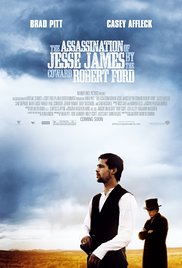 There’s something about a Western that brings out the best in a cinematographer. As good as Roger Deakins is at his job, working in the Western genre really pushes his work to the next level. Deakins was director of photography on three westerns, True Grit, No Country for Old Men and The Assassination of Jesse James by the Coward Robert Ford, the latter two in the same year, 2007. I hadn’t seen Assassination previously, so I chose that as my subject for this Film Admissions. Of the three films, it is also the most stylized in terms of it’s photography.
There’s something about a Western that brings out the best in a cinematographer. As good as Roger Deakins is at his job, working in the Western genre really pushes his work to the next level. Deakins was director of photography on three westerns, True Grit, No Country for Old Men and The Assassination of Jesse James by the Coward Robert Ford, the latter two in the same year, 2007. I hadn’t seen Assassination previously, so I chose that as my subject for this Film Admissions. Of the three films, it is also the most stylized in terms of it’s photography.
Assassination‘s photography wears it’s influences on it’s sleeve. It recalls Terrence Malick’s Days of Heaven (shot by Néstor Almendros) in it’s depiction of the landscapes of the barely-settled Midwestern United States (the film takes place mostly in Kansas and Missouri, but was shot in western Canada.) The fields of amber waves of grain that stretch to the horizon are bathed in the warm golden hues of a setting sun. Brad Pitt’s Jesse James stands against the darkening sky while the last rays of day illuminate his face in one particular heroic shot.
Like every other DP shooting a western after it, Deakins was also heavily influenced by John Ford’s classic The Searchers (shot by Winton C. Hoch). Characters are often shot in transition between the outside and the in, silhouetted against an open doorway, echoing the famous last shot of John Wayne in Ford’s film.
The nighttime photography showcases the movies deep blacks. And “deep” is an understatement: “bottomless” gets closer to the truth. Deakins used a slight ‘bleach bypass’ when developing the negatives. This is a chemical process, little-used in the industry until Deakins’s work on the movie 1984, whereby some of the silver is retained in the film’s emulsion. In normal color negative processing, the silver is removed and replaced by color dyes. The result is, effectively, a black and white image superimposed over the color one. This reduces both color saturation and the film’s exposure latitude.
The most unique aspect of Assassination’s look comes is found in transition shots, where the edges of the frame are blurred out and the colors have a reduced saturation, giving them the look of a late-19th century daguerreotype. Deakins kit-bashed filters for his cameras by removing the front elements from old wide-angle lens. He mounted these filters, which have since come to be called ‘Deakinizers,’ in front of macro-lenses, resulting in a look that is evocative of an old-time camera.
With over forty years experience as a cinematographer, Deakins has built up a vast toolbox of tricks and techniques. Picking and choosing the best ones to match a particular project gives each film its own style. Even when working in the same genre, at roughly the same point in time, Deakins’s talent is crafting a unique look such that no one of his films can be mistaken for another.
A Beautiful Mind
2001, Universal Pictures, dir. Ron Howard
by Krystal Lyon
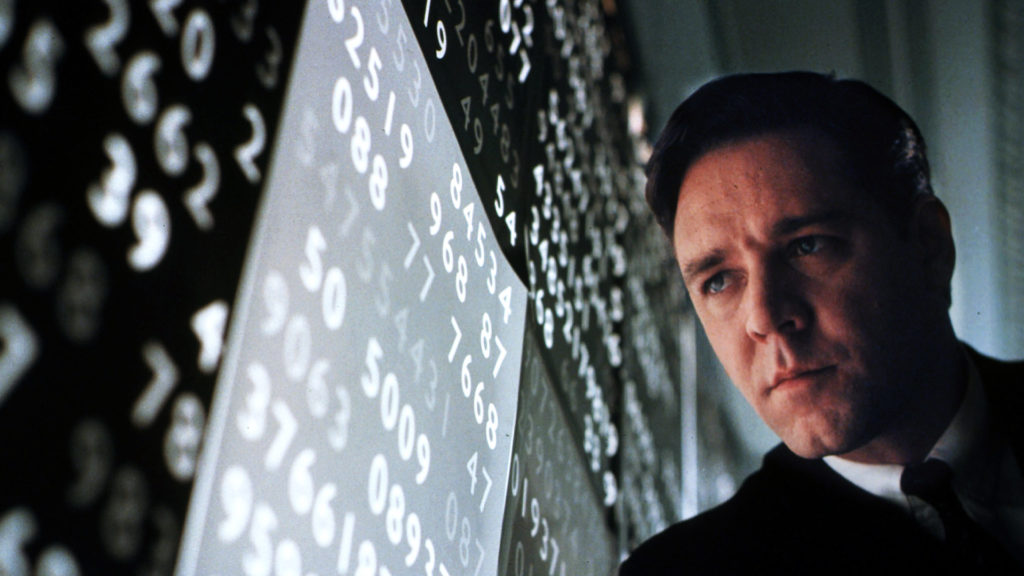
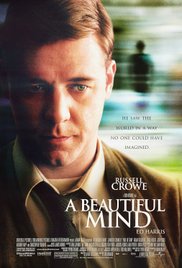 There’s one reason why A Beautiful Mind has been avoided ’til this month’s Film Admissions and that reason is Russell Crowe. Are there actors you just don’t like and you avoid their films? It was Crowe’s affair with Meg Ryan during Proof Of Life in 2000 that soured my view of the New Zealander. I know it’s silly but I fan-girl over Hollywood marriages and relationships, and I liked the dynamic 90’s duo of Dennis Quaid and Meg Ryan. I actually think this is a fascinating topic in light of current revelations in the entertainment business. Can we appreciate a Woody Allen film or respect the talent of Kevin Spacey after we know the secrets of their personal life? But I digress and this is supposed to be about Roger Deakins and his gift behind the camera and not Hollywood scandal. In A Beautiful Mind we see Deakins’ depth and creativity to get into the mind of the math genius, John Nash.
There’s one reason why A Beautiful Mind has been avoided ’til this month’s Film Admissions and that reason is Russell Crowe. Are there actors you just don’t like and you avoid their films? It was Crowe’s affair with Meg Ryan during Proof Of Life in 2000 that soured my view of the New Zealander. I know it’s silly but I fan-girl over Hollywood marriages and relationships, and I liked the dynamic 90’s duo of Dennis Quaid and Meg Ryan. I actually think this is a fascinating topic in light of current revelations in the entertainment business. Can we appreciate a Woody Allen film or respect the talent of Kevin Spacey after we know the secrets of their personal life? But I digress and this is supposed to be about Roger Deakins and his gift behind the camera and not Hollywood scandal. In A Beautiful Mind we see Deakins’ depth and creativity to get into the mind of the math genius, John Nash.
When asked about his approach to A Beautiful Mind, Deakins said “I was intrigued by the challenge of filming something that was so much about a thought process.” And this seems counter to how we normally view cinematography. When I think about cinematography I focus on sweeping landscapes, giant shots of exciting big cities and beautiful portraits of vital characters in the film, not of internal thought. If you look at Deakins’ work in The Assassination Of Jesse James By The Coward Robert Ford, Skyfall and all of his work for the Coen Brothers you see those landscapes, cities and portraits and his style draws you deeper into the story. Many times he opts to rein back on the special effects so the scene feel a bit more real than fantastic. Deakins put it this way, “A simple approach can often be more ‘human’ and emotionally more powerful.” But how to do that when you are trying to show the world of a brilliant man suffering with paranoid schizophrenia? How do you show what’s going on internally and make it feel real and human?
A Beautiful Mind is the true story of Nobel Prize winner for economics, John Nash (Russell Crowe). We witness his struggle to discover something new and original at Princeton, his marriage to Alicia (the magical and Oscar winning for this role Jennifer Connelly), and his secret work in cryptography for the Department Of Defense. Halfway through the film you realize that while some of these events are real there are people and actions that exist only in his head. Director Ron Howard and Deakins decided to present Nash’s delusions to the audience the way he saw them, as reality. And Deakins’ cinematography magnified the excitement of his academic life and the menace of his increasingly frightening bouts with paranoia. It’s a simple and understated technique but it works in A Beautiful Mind and it allows the audience to get caught up in the story.
A Beautiful Mind is a gorgeous piece of art from masters Ron Howard and Roger Deakins, as attested Howard won two Oscars that year for Best Director and Best Picture. Deakins’ revealing shots and the incredible screenplay share a beautiful story about a wife and some dear friends that cared for a broken man. They were his logic, his reason and redemption when his own mind let him down. No matter what I think of Crowe, A Beautiful Mind is powerful and not to be missed!
The Reader
2008 / The Weinstein Company / dir. Stephen Daldry
by Jim Tudor
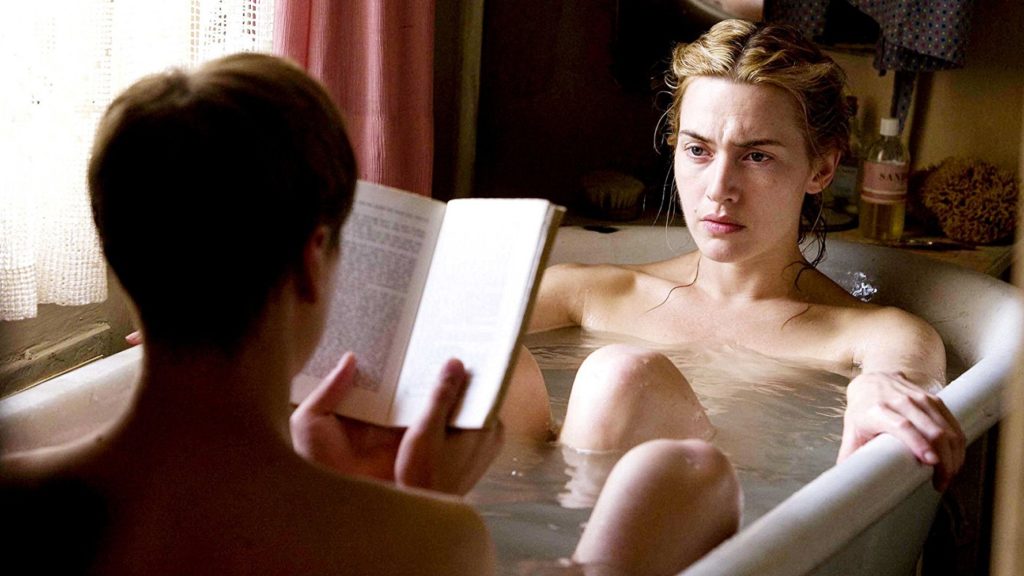
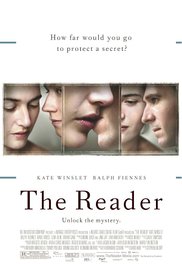 An underage boy is seduced by a woman who walks in on him naked. A Weinstein Company production.
An underage boy is seduced by a woman who walks in on him naked. A Weinstein Company production.
Here we have a movie taking in place in Germany with German people both speaking English and having of sex. How again is this film supposedly truthful…? Of course, I digress… Despite my own very British last name, it’s mostly Germans in my family mix. So, I suppose it’s due to the trampling of both points that I owe my own existence. With that in mind, it’s time I finally find my read on the Weinsteins’ uneasy awards contender of several years ago, The Reader.
In 1958 Germany, a suddenly sick fifteen year old boy (David Kross) is helped by a grown woman (Kate Winslet) he’s never met. Immediately he does what most any teen male does when a member of the fairer gender shows him kindness – he assumes she’s in love with him. His infatuation leads to stalking which leads to an actual relationship. Quickly, they find themselves in a secret affair, meeting for sex every day after school. In its first third, The Reader runs to nudity as though it’s story actually would live and die by it. They’re copulating in a depressingly filthy apartment, but I suppose they’re too distracted to notice.
The film jumps forward in time more than once, young Michael eventually growing up into Ralph Finnes, still grappling with exclusively with this aspect of his past. And with good reason – as a law student (when he is still played by Kross) in the 1960s, he learns that Winslet’s character was a prime guard at various concentration camps during the Second World War, doing her part to murder Jewish people wholesale. But… but… but… She’s a complex case, isn’t she? Because (wait for it)… she cannot read. Stories are her escape from her world and herself, and of being read to means taking on affairs with young Arian boys, so be it.
While there are fleeting moments of outspoken German youth proclaiming that the country must face its Nazi past if it is to truly move beyond it – a noble stance that is the very platform for the New German Cinema movement in the 1970s and early 1980s – this is ultimately watered down self-righteousness, spouted by an American-made film, no less. (And keep in mind that The Reader, hailing from 2009, played to an America where the wrongness and evils of Nazism was still accepted as fundamentally obvious).
Somehow nominated for a cartload of awards at the time, this is the project that finally nabbed Winslet her Academy Award. She has a lot of difficult screen time, much of it unclothed in the early portion of the movie. Nowhere has it been more true that WWII concentration camps + “sexual frankness” + an actress considered overdue = Oscar gold.
Before too long, I found myself wondering which in-house Weinstein go-to craftsman directed this one. Stephen Frears? Stephen Daldry? Lasse Hallstrom? …John Madden…?
It’s Daldry. The guy also behind The Hours and Extremely Loud and Incredibly Close. No wonder I kinda hated this film. Those other films of his are simply not my thing.
Amid some very good performances and yes, some very fine lighting, there lies a movie with no confidence in itself. When it’s not telegraphing plot points, it’s over explaining things. I went into The Reader having previously avoiding it for reasons that are vindicated above. But, this being the most prominent Roger Deakins-lensed film I’d yet to see, now was finally the time.
The joke’s on me – Deakins is merely one of two cinematographers. It’s a long story, and one that can be found in this film’s IMDb trivia page. But basically, when production got shut down, Deakins had to leave to work on another film. The replacement cinematography, Chris Menges, shot the rest, clearly in a “Deakins style”. (Evocative, tactile, painterly, lived-in). All the scenes with Winslet are reportedly shot by Menges. (Never mind our choice of image for this entry. This is Winslet’s movie anyway.) That being the meat of the film, that pretty much renders this entire entry into “Roger Deakins Film Admissions” moot.
The Reader is typical self-important Daldry; glossy tripe with a lair of grit thrown on top. Deakins was wise to close his chapter of this one when he did.
Unbroken
2014, Legendary Entertainment, dir. Angelina Jolie
by Paul Hibbard
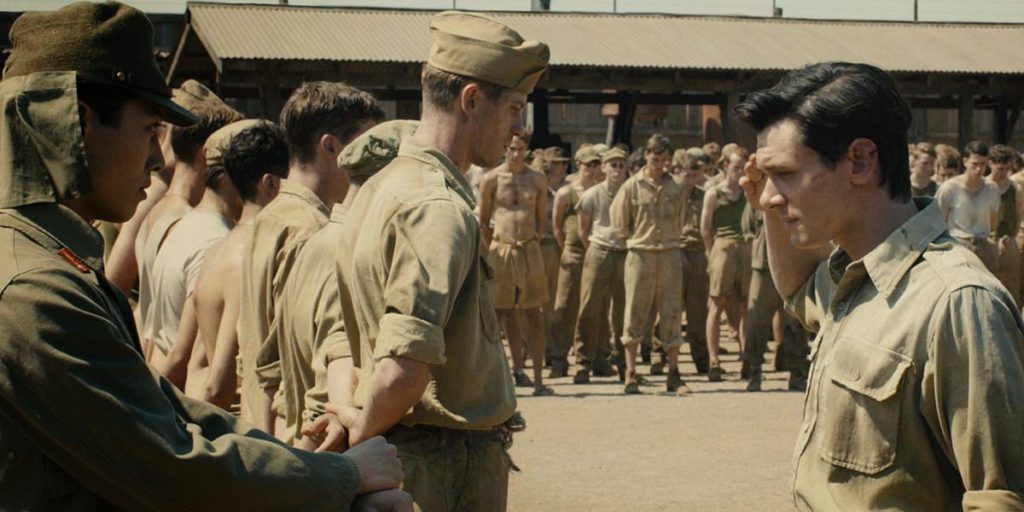
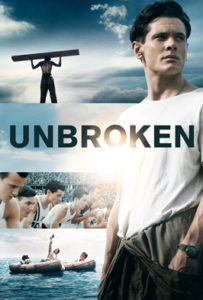 In Unbroken, Olympic runner Louis Zamperini is relentless. He is an unstoppable force that rises to the challenge of the 1936 Berlin Games, of airborn gunfights, of being shot down in the Pacific and constant beatings and starvations from the Japanese.
In Unbroken, Olympic runner Louis Zamperini is relentless. He is an unstoppable force that rises to the challenge of the 1936 Berlin Games, of airborn gunfights, of being shot down in the Pacific and constant beatings and starvations from the Japanese.
In the film, Zamperini (Jack O’Connell) gives an incredibly brutal and physical performance, both with the transformation of his body and the abuse he endures. The person who drops the ball is director Angelina Jolie, who could have focused on Zamperini’s incredible life, his athleticism and Olympic achievements, his battles with PTSD and alcoholism, his finding of God or the fact he lived to 97 years old despite barely surviving the ordeal. Instead, she primarily focuses on the beatings. In that case, the film suffers in the same ways that Passion of the Christ suffers. After watching it, I asked, is that what you got from the subject’s story? Beatings.
He had a truly spectacular life, which called for a spectacular book that he wrote in 2010 that needed to be matched with a spectacular film. The film, for all of its flaws, is visually stunning.
Deakins approach was interesting. He went digital for the first time, but countered that by still creating a visually beautiful film with amazing light work. Deakins intentionally wanted to do the opposite of what he did with Jarhead, where he went handheld and grittier.
With Unbroken, the juxtaposition of beauty but realness was achieved with the step into digital filmmaking. Even though the movie is far from perfect, it marks a big step for Deakins in his career.
Blade Runner 2049
2017, Warner Bros., dir. Denis Villeneuve
by Erik Yates
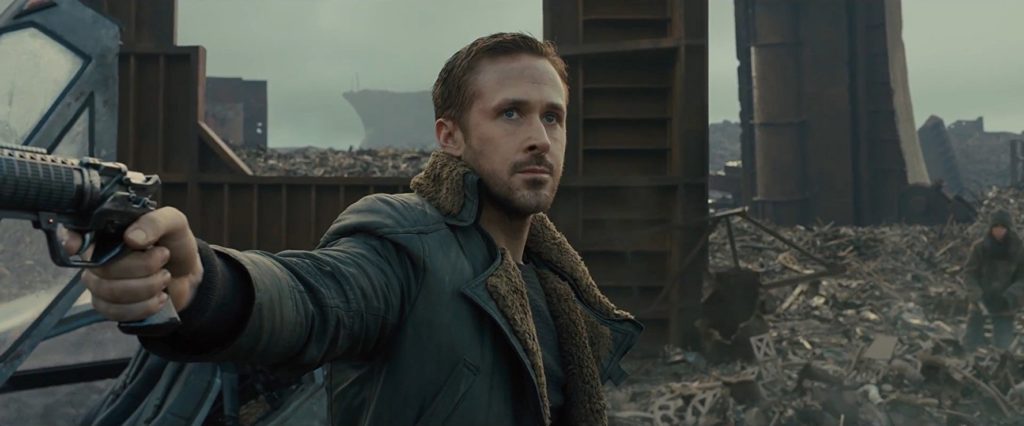
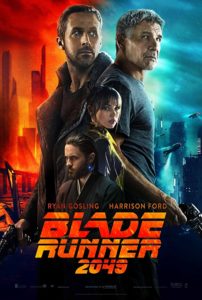 Roger Deakins cinematography is beautifully displayed in this year’s Blade Runner 2049. Deakins’ challenge was quite enormous in this film. Not only did he have to capture the iconic aesthetic of this world as it was established in 1983 when the original Blade Runner film came out, but he had to build upon it without changing the atmosphere and landscape too drastically. He also had the challenge of capturing something wholly unique that would allow a sequel filmed some thirty-five years later to be able to stand on its own and establish its own identity. He has succeeded on both fronts with Blade Runner 2049.
Roger Deakins cinematography is beautifully displayed in this year’s Blade Runner 2049. Deakins’ challenge was quite enormous in this film. Not only did he have to capture the iconic aesthetic of this world as it was established in 1983 when the original Blade Runner film came out, but he had to build upon it without changing the atmosphere and landscape too drastically. He also had the challenge of capturing something wholly unique that would allow a sequel filmed some thirty-five years later to be able to stand on its own and establish its own identity. He has succeeded on both fronts with Blade Runner 2049.
Deakins has long established himself as a cinematographer that excels in natural settings and urban landscapes. From Shawshank Redemption, No Country for Old Men, Prisoners, and Sicario, he has helped create the backdrop of gritty stories who rely on their settings and scenery to drive the narrative. Occasionally he has helped to build worlds. Hail, Caesar!, while not true world-building, relied on Deakins to capture the beauty and aesthetics of the various worlds that existed within Hollywood’s various genre pictures from musicals, synchronized water dances numbers, and even George Clooney’s Biblical epic, Deakins faithfully captures the look, feel, colors, and textures required of each scene.
For Blade Runner 2049, he did much the same, whether it was matching the look of Blade Runner and Blade Runner 2049’s Los Angeles, or detailing the remote farm where Ryan Gosling encounters his first replicant, each frame is meticulously shot and the rich dystopian colors brought forth to help bring out the story in a rich, vibrant, and complete way that helps make Blade Runner 2049 a better film than its predecessor, and that compliments director Denis Villeneuve’s vision, allowing him to continue expanding this fictional world into something tangible, imaginable, and yet still natural. I found this latter point to be something that truly captures why Roger Deakins matters and why every film he is involved in is somehow elevated, and therefore a must-watch, if only for the aesthetic alone.


